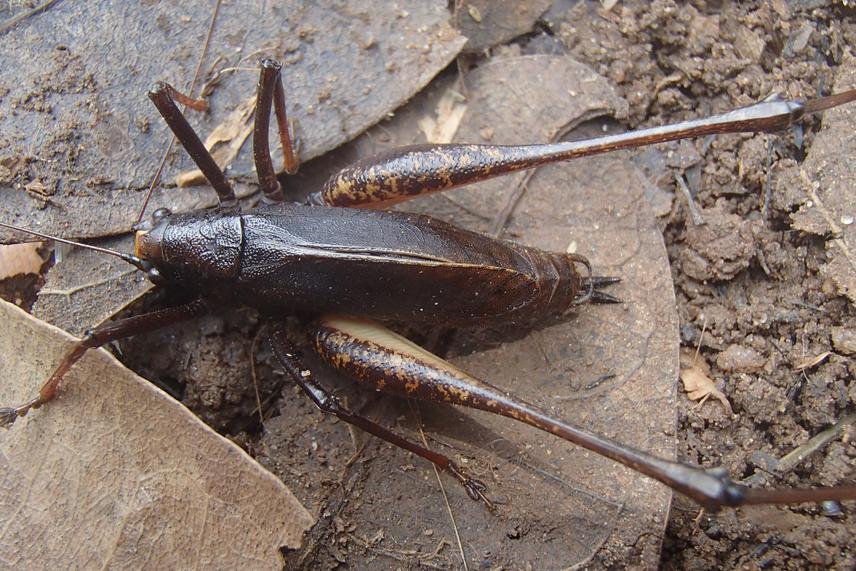Alain Simeu Noutchom
Katydids are insects belonging to the family Tettigoniidae, commonly also called bush crickets. They are part of the subordinate Ensifera and include 19 subfamilies, of which 8 are found in Africa, such as Conocephalinae, Hetrodinae, Meconematinae, Mecopodinae, Phaneropterinae, Pseudophyllinae, Saginae, and Tettigoniinae. Like other insects, they are quite sensitive to changes in their habitat and may experience a rapid decline as a result of deforestation and environmental deterioration in Cameroonian humid forests. However, in Cameroon, they are poorly studied, their diversity is unknown, and important work is still to be done to clarify their status.

Male of Macroscirtus kekeunoui.
In this context, we set out to provide a preliminary assessment of the conservation status of this group to help plan conservation strategies in the Mpem & Djim National Park in Cameroon. This park covers about 976 km2 and is located in neighbouring areas like the Dja Biosphere Reserve and Lobeke National Park in Cameroon. To reach this aim, we will conduct sweep net sampling each month in the Mpem & Djim National Park to assess the distribution, bioecology, and threats of katydid species.
A total of 12 field trip samplings will be conducted in the different park sectors. Two transects of 4km each will be defined per trip, for a total of 24 transects for twelve field trips. The distribution assessment will be based on GPS coordinates collected during sampling. We will plot all the coordinates and records on a map of Katydids distribution using the free software QGIS. To assess the threats, during the survey in the park, the presence of anthropogenic activity threats will be recorded along the transect cut; they include bush fire, pasture, logging, hunting, shifting cultivation, and other activities. Bioecological data include the abundance and occurrence of katydids. The anticipated results are the establishment of katydids distribution map, documenting the threats facing of katydid, and estimating the occurrence and abundance of katydids.